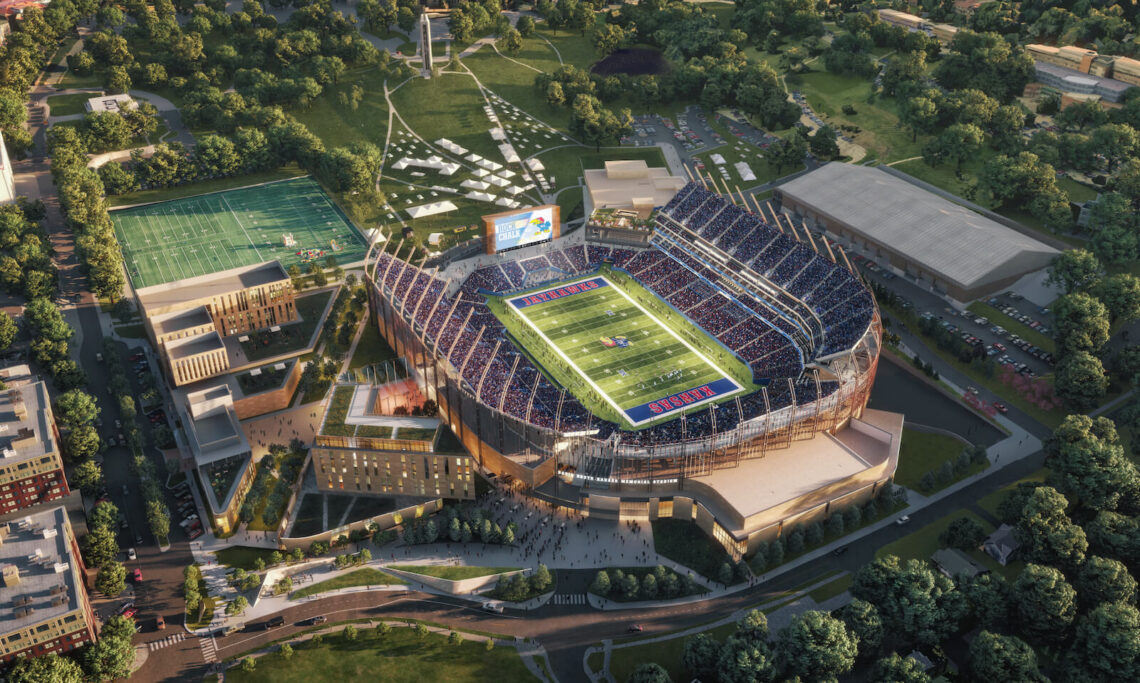CLEMSON, SC — The roar at Death Valley is getting louder, the nights getting brighter, and the comforts getting premium. Clemson University has unveiled an ambitious $3.2 billion renovation plan for Memorial Stadium, a sweeping transformation that promises to push the stadium into the top echelon of college football venues.
This isn’t just lipstick on the pig — it’s a full-scale rebuilding of the fan experience, the team environment, and the stadium’s infrastructure. If fully realized, this would be one of the most expensive stadium renovations in college football history.
What’s in the Playbook: Key Upgrades
While many details remain under study or in preliminary design, public statements and recent renovation phases give strong hints at what Clemson is likely aiming for. Below are the major features that are either confirmed or very likely part of the plan, plus some “next-level” add-ons that a $3.2B investment could include.
Feature Already Underway / Confirmed Possible/Speculative Upgrades Under a $3.2B Plan
Video board, lighting, sound, signage In 2022, Clemson installed a new 126-ft x ~57-ft video board (one of the largest in the ACC/NCAA), upgraded speaker arrays, ribbon boards, and LED lighting. Ultra-high resolution displays throughout; more immersive audio systems; interactive signage; augmented reality or fan experience tech; dynamic lighting shows synchronized to game moments.
Premium seating & club spaces Masters Club was added (~600+ new premium seats and indoor/outdoor club spaces) in the WestZone. Significantly more suites, VIP lounges, premium zones on the east side, perhaps “sky boxes,” field-level club seating, or exclusive fan-amenity districts.
Player & Team Facilities Renovations to locker rooms, team areas, first floor of WestZone in Phase II. State-of-the-art training, recovery, nutrition, wellness; expanded meeting spaces; better media / recruiting presentation spaces.
Fan access and Infrastructure Tiger Walk experience being upgraded, improvements to Lot 5 (parking, tree plantings, entrance plazas). East entrance at Howard’s Rock has been enhanced. Wider concourses, more restrooms and concessions, improved ADA access, better traffic flow, upgraded utilities (WiFi, power, restrooms), perhaps even retractable or covered seating in some sections.
The Hill & Tradition Early plans have considered changes to “The Hill” (east end) — decreasing its slope in places, adding stairs and rails, improving safety while preserving tradition. More landscaped terraces, improved safety, enhanced spectator comfort, better standing/viewing areas, integration with premium zones without sacrificing capacity or tradition.
Why $3.2B? What Makes This Level of Investment Logical
If Clemson is truly talking $3.2B, this reflects several motivators:
1. Keeping Pace with Rival Stadiums: Many schools are in arms-race mode: premium amenities, elite displays, recruiting environments. Clemson has to compete with Texas, Georgia, USC, and others who are investing heavily.
2. Expanding Revenue Streams: Luxury suites, club seats, exclusive spaces generate higher returns; better concessions, more parking infrastructure; more events beyond football (concerts, other sports, etc.) could be factored.
3. Fan Experience Expectations: Modern fans expect more than a game: immersive video, comfort, food & drink options, bathrooms, safety, accessibility. The “gameday experience” is now part of the recruiting pitch forward.
4. Long-Term Infrastructure Needs: Stadiums built in mid-20th century & renovated in phases accumulate deferred maintenance. A full overhaul means dealing with structural, electrical, plumbing, ADA/egress, safety codes, etc.
5. Recruiting Edge: For players, seeing premium facilities matters. For coaches and staff, having an elite home base helps. Clemson has already spent tens of millions recently; a bigger plan could lock in competitiveness for deca
Challenges & Hurdles Downfield
But such a mammoth project isn’t without risks:
Funding: $3.2B is enormous. Would require big boosters, state appropriations, rights deals, possibly debt.
Timeline: To avoid interfering with seasons, construction likely must be phased over several off-seasons.
Preserving Atmosphere: Death Valley is legendary. Changes must retain the feel — intimacy, noise, tradition (like the Hill, Howard’s Rock). Over-premiumization could hurt the fan experience.
Cost Overruns / Inflation: Construction costs keep rising. Materials, labor, regulatory compliance can drive budgets beyond forecast.
Transportation, Parking, Campus Integration: More seats / fans means more traffic; roads, parking lots, shuttles, access points may need major re
Where Things Actually Stand
As of the most recent verified information:
Clemson has completed (or is completing) Phase I and Phase II of recent stadium improvements.
Features like the new video board, premium club spaces, enhanced lighting and signage, upgraded fan walk-in experiences are already live or underway.
There is public discussion by Athletic Director Graham Neff about additional premium seating on the east side, upgrades to concourses/restrooms, better infrastructure to support things like alcohol sales. But no definitive blueprint or approved budget at the multi-billion scale has been officially published as of this date.
The Final Whistle: What $3.2B Could Mean for Clemson Football
If Clemson proceeds with a fully realized $3.2B remodel of Memorial Stadium, the results could be transformational:
Death Valley would become one of the most enviable stadiums in college football, both in look and feel.
The fan base — current, future, and recruits — would experience higher comfort, new amenities, better visibility, and perhaps a more varied set of events beyond just Saturday games.
Clemson’s revenue potential could jump sharply — more premium sales, more media moments, perhaps more bidding power for big games.
It could cement Clemson’s status not just as an ACC powerhouse, but as a leader in the facilities race.





